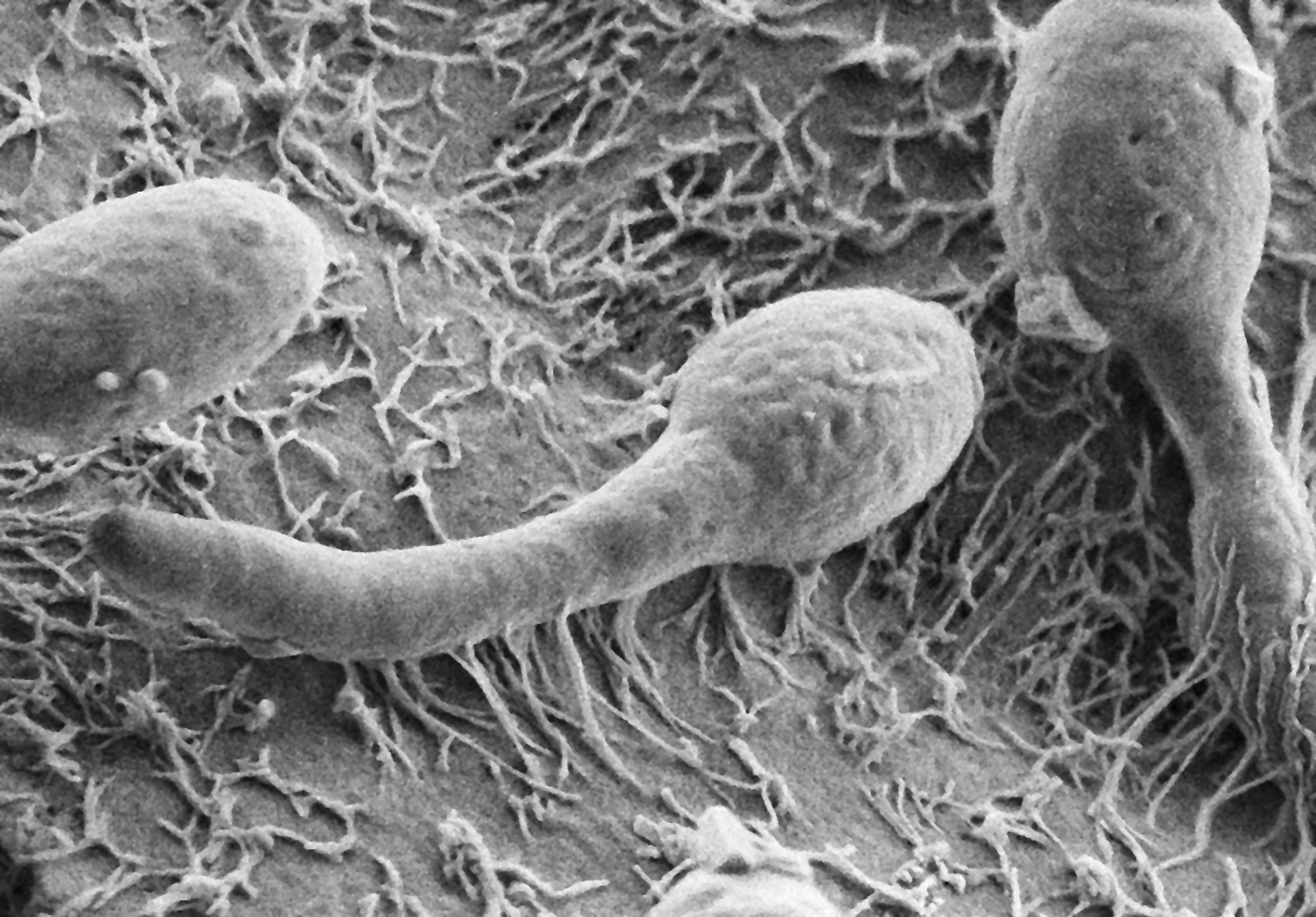The yeast Candida albicans colonizes skin and mucosal surfaces of healthy human individuals without causing disease. However, under conditions of immunodeficiency, the fungus can cause severe infections that may result in substantial damage of inner organs and death of the patient during the course of infection. Being responsible for 70 percent of fungal infections, C. albicans is the most common causative agent for this type of disease.
In our group we are particularly interested in understanding the molecular processes that allow C. albicans to transform from a harmless mucosal commensal into a dangerous pathogen. By using diverse complex infection models, we try to reflect the conditions of infection in different types of tissue as realistically as possible in order to improve our understanding of the complex interplay between C. albicans and human cells.
To this end, we apply cellular and molecular biology methods that allow us, for example, to generate sections of tissue models during the course of infection, to analyze all active genes in metatranscriptome studies or to selectively characterize individual human or fungal genes or proteins.
 Fraunhofer Institute for Interfacial Engineering and Biotechnology IGB
Fraunhofer Institute for Interfacial Engineering and Biotechnology IGB